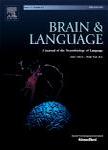版权所有:内蒙古大学图书馆 技术提供:维普资讯• 智图
内蒙古自治区呼和浩特市赛罕区大学西街235号 邮编: 010021

作者机构:SUNY Binghamton Dept Psychol Binghamton NY 13902 USA Basque Ctr Cognit Brain & Language San Sebastian 20009 Spain
出 版 物:《BRAIN AND LANGUAGE》 (Brain Lang.)
年 卷 期:2014年第132卷
页 面:22-27页
核心收录:
学科分类:0402[教育学-心理学(可授教育学、理学学位)] 0502[文学-外国语言文学] 04[教育学] 1002[医学-临床医学] 1001[医学-基础医学(可授医学、理学学位)]
基 金:NSF [BCS-1252975] Marie Curie IIF
主 题:Parallel distributed processing ERPs N400 Visual word recognition Repetition effects Post-synaptic potentials Neural computation
摘 要:The Parallel Distributed Processing (PDP) framework is built on neural-style computation, and is thus well-suited for simulating the neural implementation of cognition. However, relatively little cognitive modeling work has concerned neural measures, instead focusing on behavior. Here, we extend a PDP model of reading-related components in the Event-Related Potential (ERP) to simulation of the N400 repetition effect. We accomplish this by incorporating the dynamics of cortical post-synaptic potentials the source of the ERP signal into the model. Simulations demonstrate that application of these dynamics is critical for model elicitation of repetition effects in the time and frequency domains. We conclude that by advancing a neurocomputational understanding of repetition effects, we are able to posit an interpretation of their source that is both explicitly specified and mechanistically different from the well-accepted cognitive one. (C) 2014 Elsevier Inc. All rights reserved.